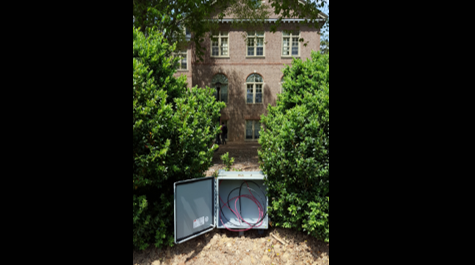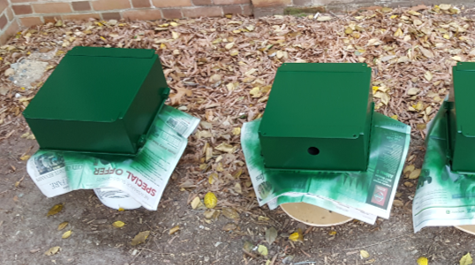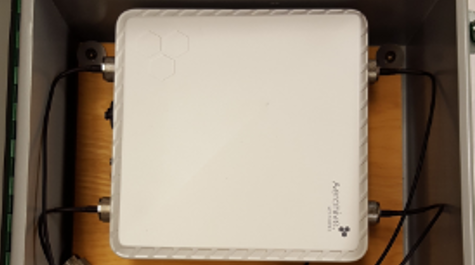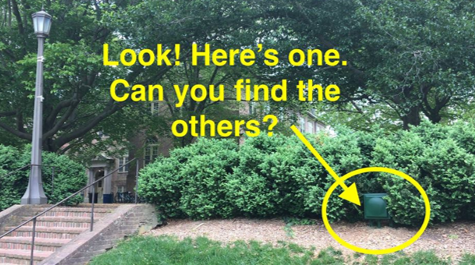Sunken Garden Gets Stronger Wi-Fi Connection
Dreaming of getting a strong Wi-Fi connection or even any connection at all while you’re lounging on the Sunken Garden? Well, the days of a spotty Wi-Fi connection are no longer. W&M IT is pleased to announce that wireless access points now line the perimeter of the Sunken Garden.
A team of IT staff has been working on this Wi-Fi connectivity project since January. Contractors were first engaged to bore conduit (a type of pipe) underground, providing a secure cable path to the next building. Once the conduit was in place, IT engineers pulled the cabling to provide power and network connectivity to the access points. Now, work on the project is completed.
Four wireless access points will serve the Sunken Garden. Out of the four points, one is located near the brick pedestal that is closest to the Sadler Center, one is located near the Thomas Jefferson statue, one is located in front of Tyler, and the other is located in front of Blair. The access points are placed in green boxes to blend in with the environment.
There has always been access points in the academic buildings surrounding the Sunken Garden, but the Wi-Fi connection was not able to provide ideal coverage outside of those buildings. “Before, we didn’t have wireless points dedicated to outdoor coverage, but realized that the Sunken Garden needed its own access points due to the amount of activity and events held there,” says Network Engineer Norman Elton.
So, how does the whole process work? Although the actual access points are wireless, they have to connect through wires in order to provide Wi-Fi connectivity. The wiring process is done through directional boring in which a small hole is dug in the ground. The conduit lies in the hole, which the wiring fishes through. Then, the network cable feeds from the access points through the conduit and goes back to an academic building. Two access points return to James Blair Hall, one to McGlothlin-Street Hall, and one to Tyler Hall.
“One of the advantages of the access points is that nothing had to be disturbed in order to install them. The wiring is not visible to anyone,” explains the head of the project, Network Manager Scott Fenstermacher.
How about other outdoor spots on campus that would benefit from the installation of wireless access points? The Architectural Review Board has approved the construction of new access points for Sorority Court that will begin this summer.
As of now, there are no other locations in mind where new access points would be installed. Fenstermacher explains that “the wire that is needed to install new access points is expensive, so to gain approval, these access points would have to provide connection to a large traffic area on campus.” However, both Elton and Fenstermacher stress to contact IT Support if anyone has any suggestions for where new access points would be needed.


















